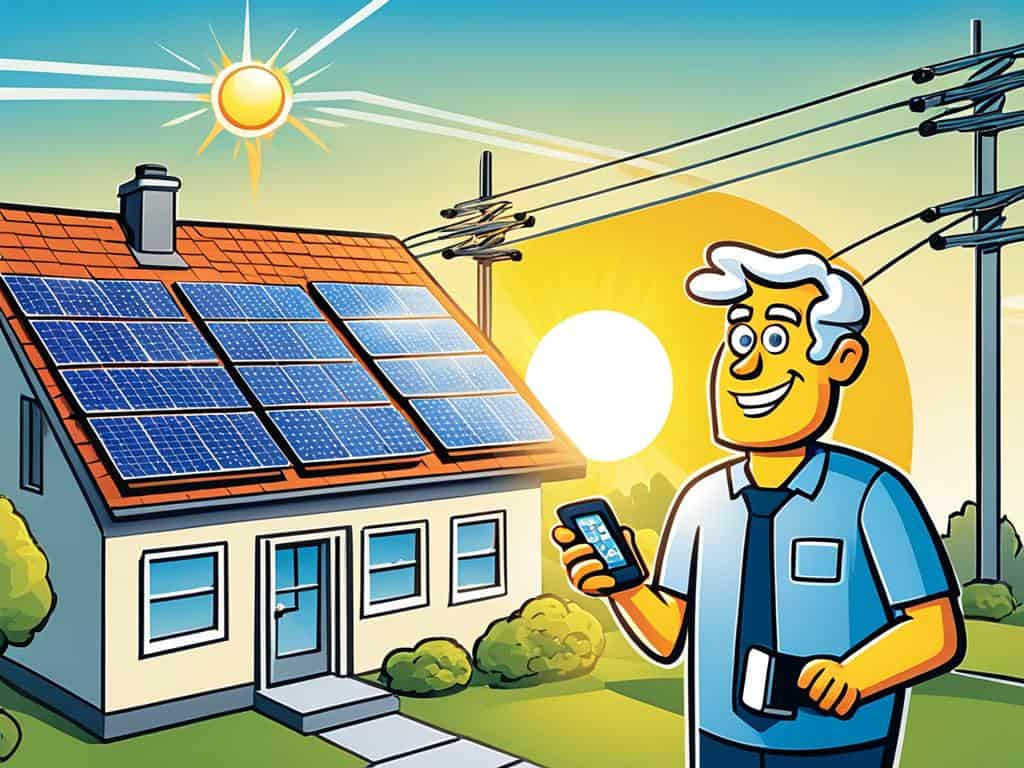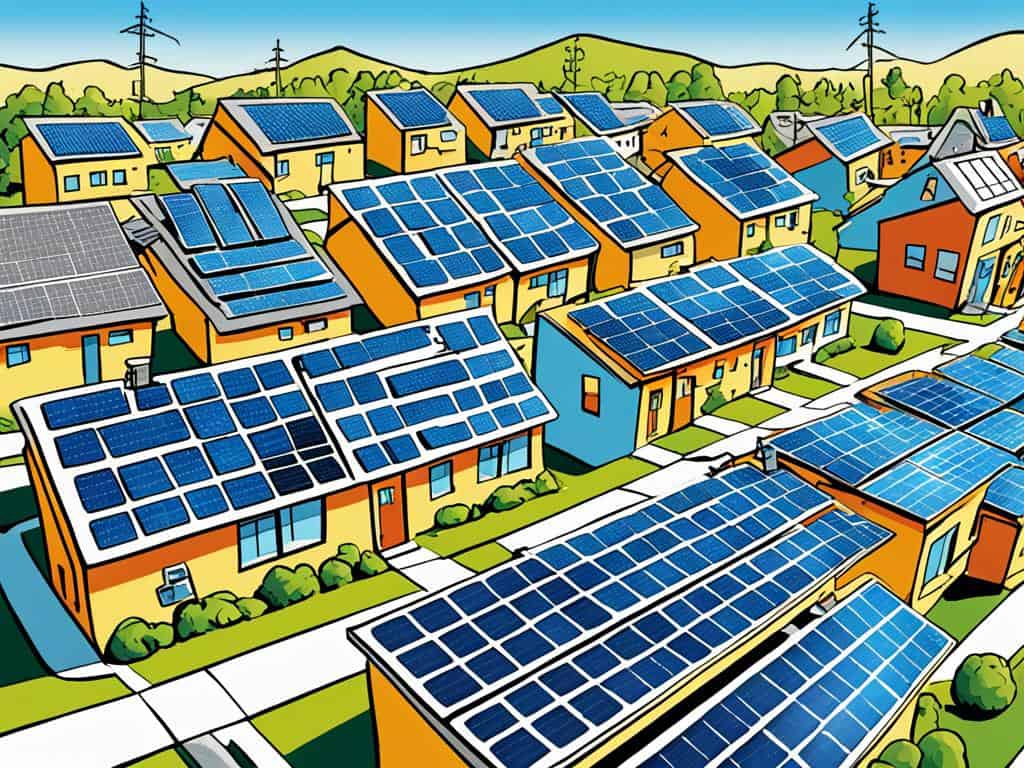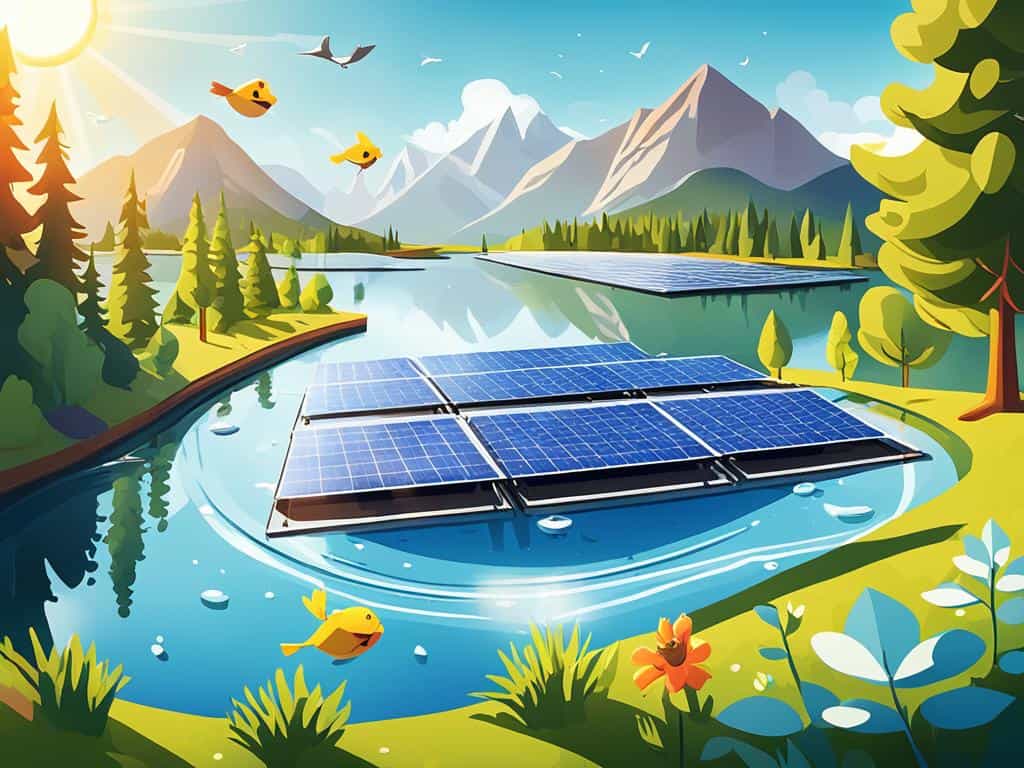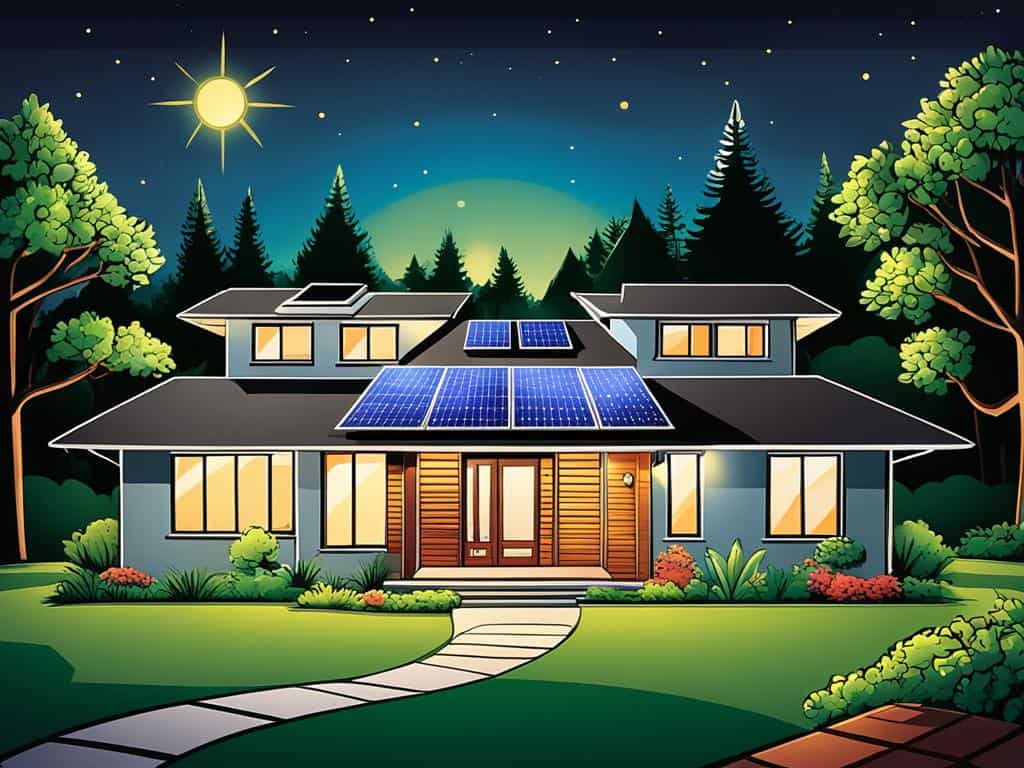Choosing the Right Solar System: On-Grid vs. Off-Grid Solutions
Discover the differences between solar on grid and off grid systems to make an informed decision for your energy needs in India. Explore now!

India is making big strides in clean energy, with solar parks and businesses turning to solar power. The choice between a solar on-grid system and an off-grid solar system affects your costs and the planet. In a country with high electric bills for businesses, solar isn’t just eco-friendly. It’s a smart financial move. With Fenice Energy, going solar is an investment that pays off in saving money and helping the environment.
India now ranks second among emerging economies in clean energy transition, as per Climatescope 2018. But what does this mean for you? It means a chance to reduce electricity bills and get tax benefits by joining a solar energy grid. This happens alongside a quick return on your investment. So, is it better to go on-grid or off-grid? Fenice Energy will help you decide with care and insight.
Key Takeaways
- Understanding the financial and environmental importance of choosing between an on-grid vs off-grid solar solution.
- Exploring India’s rising solar capacity and the incentives such as Accelerated Depreciation Benefits for businesses.
- Recognizing the swift payback periods and potential savings from investing in a grid-tied solar system.
- Assessing the suitability of solar PV technology for corporate setups amidst India’s ambitious renewable energy targets.
- Identifying the increasing feasibility of off-grid solar power systems as a reliable alternative for energy in rural and power-cut prone regions.
Understanding Solar Energy: On-Grid and Off-Grid Fundamentals
The path to a sustainable future shines bright with the choice of on grid vs off grid solar. Exploring these systems reveals how they work, impact our lives, and the incredible tech behind them. In India’s growing renewable energy market, knowing the difference between these systems is key for consumers and energy planners.
Defining Solar on Grid and Off Grid Systems
A solar panel grid system works together with the utility grid. It lets homeowners send extra electricity back to the grid. This connection helps reduce energy bills and supports a cleaner grid. On the other hand, off-grid solar frees you from relying on the utility grid. It stores solar energy for continuous use, even during outages or in remote places.
The Role of Utility Grids in On-Grid Solar Solutions
In grid connected solar systems, utility grids are crucial for energy distribution. Net metering allows the electricity from your solar panels to feed the grid and serves your home too. It supports your power needs while helping the grid, turning your home into a small power station.
How Off-Grid Systems Offer Energy Independence
Off-grid systems symbolize true freedom. They stand for a life where you control the power source. Each day starts with solar energy, freeing you from grid dependencies. This ensures you’re safe from blackouts and grid issues, highlighting total independence.
Fenice Energy offers on-grid solutions that work well with the utility grid to save on electricity costs. Our off-grid options promote the joy of being energy self-sufficient. Each option meets the unique needs and goals of our customers in India, balancing cost, convenience, and environmental care. Solar energy’s future is limitless, and we’re committed to unlocking its potential, one rooftop at a time.
The Benefits of Solar Panel Grid Systems
Switching to renewable energy sources is not just good for the planet. It is also a chance to tap into the power of the sun. With only a small part of the world’s solar energy used, there’s a lot of room for growth in the solar industry. This is especially true for grid-tied systems. These systems support eco-friendly living and provide real money savings for people in India.

Impact on Reducing Carbon Footprint
Choosing a grid tied solar system has a big impact on the environment. Take a 4 KW solar panel grid system, for example. It can greatly lower your carbon footprint. Over 25 years, it’s like planting more than 200,000 trees because of the CO2 it offsets. This matters a lot for the planet and shows how each person can help fight climate change.
Financial Incentives and Payback Periods
Buying a solar panel grid system isn’t just about going green. It’s also a way to save money. In India, people get help from the government and through net metering, making it faster to pay off the initial cost. Once you’ve covered that cost, the electricity you make is pretty much free. This means you save money for a long time. The design methodology of the solar power system is all about getting the best performance and saving money.
| Aspect | Grid-Tied Solar System | Off-Grid Solar Installation |
|---|---|---|
| Connection to Grid | Yes | No |
| Growth Potential | High with the option for net metering | Limited to local usage |
| Carbon Footprint Reduction | Equivalent to planting a vast number of trees | Significant but limited by system size |
| Financial Incentives | Subsidies, savings on bills | Greater independence, no electricity bills |
| Energy Autonomy | Depends on grid stability | Complete |
Fenice Energy helps both individuals and businesses in India use solar panel grid systems effectively. They have 20 years of experience. Fenice Energy is leading the way to a sustainable future with both grid-tied and off grid solar installation choices.
Determining Your Solar Energy Needs
Today, more people are choosing sustainable energy. Knowing your energy needs is crucial for a successful off grid solar setup. It ensures your solar solution matches your usage and environmental goals.
Analyzing Energy Consumption Patterns
Everyone uses energy differently, which affects your solar setup. By looking at how much energy you use annually, you can get the right size solar system. For example, a 7.15-kilowatt system is typically enough for an average American home.
Solar technology is getting better and more affordable. A 4.52 kW system could fully cover a home that uses 6,000 kWh per year. Fenice Energy focuses on making solar setups efficient and cost-effective.
Assessing Site-Specific Solar Potential
It’s also important to check your location’s solar potential. This means knowing how much sun your area gets daily and throughout the year. Places like Phoenix and Tucson in Arizona are great for solar because they get 6.5 peak sun-hours a day.
When setting up solar, remember to consider the derate factor. It shows how things like temperature affect your system’s efficiency. A well-planned off grid solar setup can offer constant energy.
Choosing between an off grid solar installation and a grid-tied system depends on your needs. Fenice Energy is skilled at figuring out what works best for each client’s situation.
To help with costs, there are incentives like the Solar Investment Tax Credit (ITC). In India, this could mean a 26% tax return for systems put in by 2022. And a 22% credit for those installed in 2023.
Solar energy lowers your electric bill and can raise your home’s value. Indian homeowners can even add solar system costs to their mortgages. This gives their investment an eco-friendly boost.
In the end, whether you want an off grid solar setup or a grid-connected system, Fenice Energy’s approach helps you use solar power effectively in Indian settings.
Components of an On-Grid Solar System
India is moving towards a greener future, with solar energy grid tie systems playing a big role. When talking about on-grid vs off-grid solar, it’s key to know the parts of a grid connected solar system. These components work well with India’s clean energy plans.
The Roles of Inverters and Net Metering
The inverter is at the core of any on-grid solar setup. It changes direct current (DC) from solar panels into alternating current (AC), powering our devices. Fenice Energy knows that a good inverter is crucial for the system to work well. Net metering is essential for those using solar energy. It lets owners send extra electricity back to the grid. They get credits in return, making solar more valuable. This happens especially when the cost of solar electricity matches or is less than regular electricity.
Alignment with Renewable Energy Policies
Fenice Energy connects solar energy grid tie systems with India’s clean energy plans. These plans support solar power with subsidies and incentives. India’s aim for grid parity shows in the jump from 39 megawatts of solar power in 2009 to 39,000 megawatts in 2020. This shows a strong commitment to sustainable energy.
| Component | Role | Considerations for On-Grid Systems |
|---|---|---|
| Solar Panels | Harvest solar energy | Need to be optimally angled and positioned for maximum efficiency |
| Inverter | Convert DC to AC | Core to system efficiency, must be reliable and high-quality |
| Net Metering | Credits for surplus energy | Can significantly offset the cost of electricity from the grid |
| DC Protection System | Safeguards the system | Prevents over-voltage and current-related accidents |
| AC Protection Panel | Ensures safety of AC output | Mandatory for grid compliance and safety codes |
| Batteries (Optional for Hybrid Systems) | Stores excess energy | Lithium-ion batteries are preferred for better capacity utilization |
On-grid solar systems are known for being cost-effective and dependable, especially in cities. They help India meet its sustainability goals by lowering carbon emissions. Off-grid solar systems, on the other hand, are perfect for rural or isolated areas. They provide total energy independence.
At Fenice Energy, we focus on providing high-quality on-grid systems. These systems meet India’s varied energy needs and policies, leading to a cleaner, more stable energy future.
Key Features of an Off Grid Solar Power System
Off-grid solar systems give us energy freedom. They use solar technology. This matches rising energy needs with a green solution. People choose off-grid solar to lower carbon footprints and stay power independent.
Importance of Batteries and Charge Controllers
Batteries are vital in an off-grid setup. They store energy for when there’s no sun. Charge controllers keep batteries safe by making sure they charge right. Fenice Energy uses top batteries and charge controllers for steady power in India, even when cloudy.
Design Considerations for Off-Grid Systems
Designing an off-grid system needs thought. You must look at energy needs, weather, and space. Fenice Energy uses its experience to make custom off-grid solutions for India’s unique needs. They ensure systems meet energy goals efficiently.
| Feature | Description | Benefits |
|---|---|---|
| Solar Panels | Capture sunlight and convert it to electricity | Renewable energy generation reduces CO₂ emissions |
| Batteries | Store excess power for later use | Enables power use during nighttime or cloudy days |
| Charge Controllers | Manage battery charging and prevent overcharging | Extends battery life and enhances system safety |
| Inverters | Convert DC electricity to AC | Allows compatibility with common household appliances |
| Remote Monitoring | Track system performance remotely | Quick detection and resolution of system issues |
| Overload Protection | Protects system from current overload and short circuits | Improves system reliability and longevity |
| Automatic Voltage Regulation | Stabilizes output voltage | Consistent power supply and protection of sensitive devices |
Fenice Energy’s goal is to use renewable energy fully. Their off-grid solar systems are carefully designed. Be ready and keep power secure with an off-grid setup that fits future energy needs now.
Solar on Grid and Off Grid System Cost Comparison
When starting your solar energy journey, the cost is crucial. It matters whether you choose solar on grid systems, off grid systems, or hybrids. Thanks to policy support and tech progress, solar power is more reachable. Fenice Energy offers deep cost analyses to help Indian users pick a sustainable path.
Initial Installation Costs and Solar Incentives
Making the switch to solar energy can seem scary because of the initial cost. An off grid solar system usually costs more upfront. This is because it needs extra parts like batteries and charge controllers for storing and managing energy. But, a grid tied system can cost less to set up. It doesn’t need expensive batteries.
Solar incentives make going solar easier for Indian users. They can get subsidies for solar on grid systems, enjoy net metering, and get tax breaks. Fenice Energy is there to help use these incentives well. They make switching to solar less expensive.
Maintenance and Long-Term Savings
Thinking about maintenance costs is key for your solar system’s life. Grid tied systems have lower maintenance costs. They let homeowners sell extra power back to the grid, saving on electricity bills. Off grid systems offer energy freedom but may have higher maintenance costs. This is often due to needing new batteries over time.
In the end, both solar on grid and off grid systems lead to big savings. These come from using less utility power, avoiding high electricity rates, and the low running costs of solar tech. Also, Fenice Energy points out a big drop in solar gear prices since 2010. This makes now a great time for Indians to invest in solar.
| System Type | Initial Cost | Solar Incentives | Maintenance | Long-Term Savings |
|---|---|---|---|---|
| On-Grid | Lower | Subsidies, net metering, tax rebates | Lower | Potentially high |
| Off-Grid | Higher | Limited to no direct incentives | Higher (due to batteries) | Energy independence |
Choosing between on-grid and off-grid depends on many things. These include how easy it is to get electricity, how often outages happen, and your energy needs and budget. Fenice Energy creates personalized solutions for each case. They make sure clients get the most affordable and efficient solar system for them.
Installation Process: On-Grid vs. Off-Grid
Choosing the right solar energy system is the first step. Understanding the installation process is just as important. Whether you choose an off grid solar installation or a grid connected solar system, knowing the setup details is crucial. We will look into how these two differ and what to expect during the installation.
In India, most states have rules that benefit on-grid systems through net metering, letting you earn credits for extra energy made. But with 11 states changing to other methods, it’s important to stay updated. Off-grid systems use the sun and batteries to keep electricity always available, even without net metering.
On grid vs off grid solar installations have their own challenges and needs. Grid-tied systems are simpler; they involve mounting panels, setting up inverters, and connecting to the grid. On the other hand, off-grid installations require more planning and expertise to manage the battery bank and charge controllers for a smooth shift to solar energy.
- Off-grid systems make you completely energy independent and avoid electric bills, but they need more upfront money for batteries and a complex setup.
- Grid-tied systems may have small fees due to utility charges but are easier to install and can keep power on during outages with a battery backup.
- Hybrid systems with batteries can save money for businesses by lowering demand charges, showing how solar solutions can meet various energy needs.
Fenice Energy stands out for its commitment to excellence, safety, and performance, ensuring your installation meets expectations and Central Electricity Authority rules. They focus on technical standards from the minimum rooftop solar capacity of 1KWp to the limits on distribution transformer peak capacity.
Choosing Fenice Energy means your switch to a sustainable lifestyle with an off grid solar installation or a grid connected solar system will be smooth and follow India’s solar guidelines closely.
Navigating Solar Energy Grid Tie Regulations
In India, the push for cleaner energy has made grid tied solar systems more common. There are many rules for setting them up and using them. It’s not just about following the rules; it’s also about making sure homes and companies can fully enjoy the benefits of solar energy. Fenice Energy, with 20 years of experience, helps clients navigate the complex policies related to these systems.
Sophisticated inverters are key to solar installations. They change solar power from DC to AC, which we can use in the grid. This tech advancement has led to better inverters. They keep the grid stable and adjust to changes in voltage or frequency. These devices follow guidelines by FERC and NERC to provide important grid services, as seen in the NREL/TP-6A20-66724 Technical Report.
Fenice Energy does more than just meet the rules. They ensure each solar system gives the best financial and environmental outcomes. Entities like Dr Patki Research Foundation and Rasika Motors/Riverside Honda have seen huge annual savings thanks to them. Understanding net metering, grid standards, and different inverters puts Fenice Energy at the leading edge of India’s green shift. This move lets businesses and home owners cut their carbon footprints and save money, as if they planted thousands of Teak trees.


